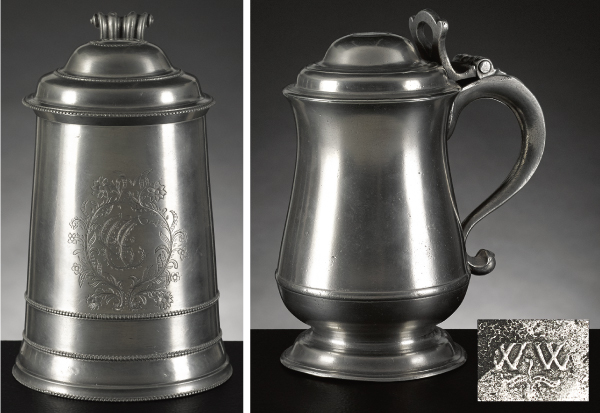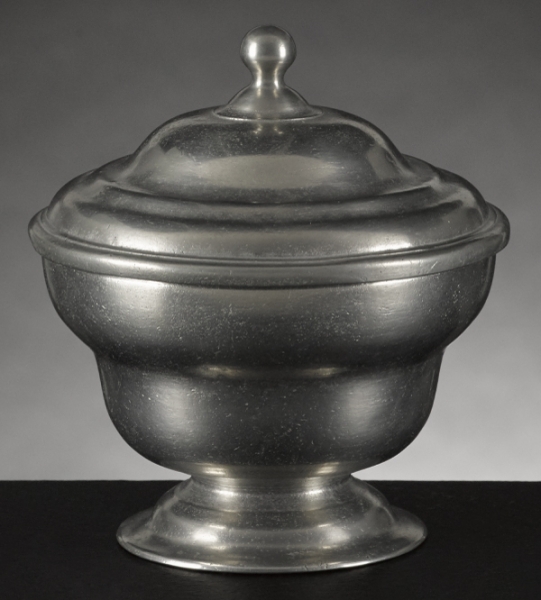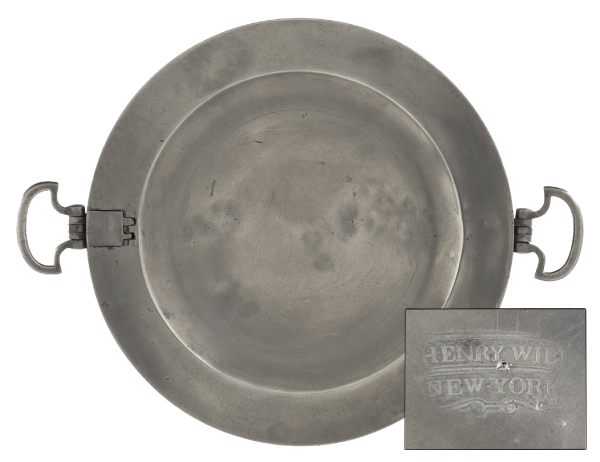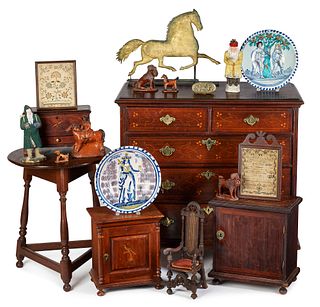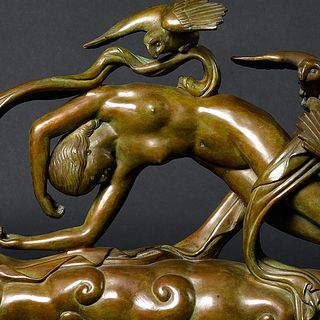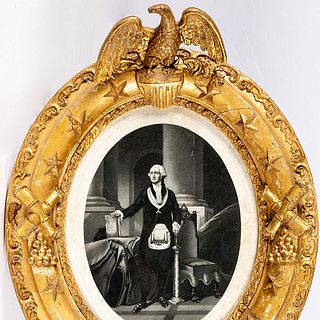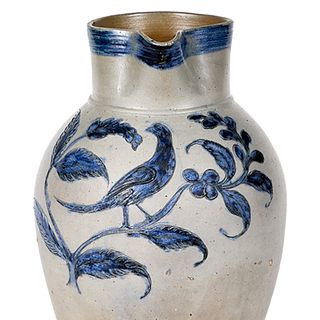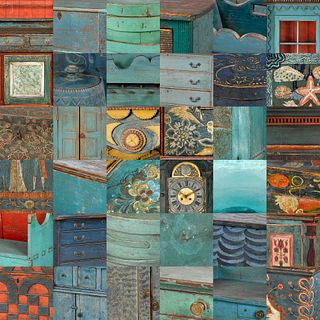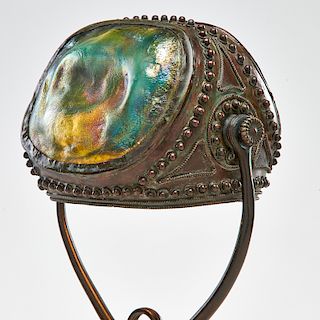William Will: Philadelphia’s Pewterer
William Will is arguably the most prolific American pewterer of the 18th century. From his Philadelphia shop, he produced pieces of exceptional quality and quantity. Will was also known for his creativity and ingenuity, working with a diverse repertoire of forms to create unique designs. His work is a staple of most great American pewter collections. But who was William Will? Apart from creating fine pewter, Will turns up multiple times in the historical record, giving us clues, however brief, into what appears to be quite an active life beyond the walls of his shop.
Left: Fine Philadelphia pewter tankard, ca. 1780, attributed to William Will. One of the finest American tankards extant, this piece is Lot 176 in Pook & Pook, Inc.’s January 15th and 16th Americana auction. Right: Philadelphia pewter tankard, ca. 1780, bearing one of Will’s many marks on its base and crossing the auction block as Lot 180.
Born in Nieuwied, Germany in 1742, William Will was the fourth son of a pewterer and one of multiple brothers pursuing the family business. His family moved to America in 1752 and settled in New York City, where his elder brother, Henry, established a successful pewter business. There are no sources to illuminate when or why Will made the transition to Philadelphia, though it is likely that he made the trip with his brother, Philip, whose pewter advertisements date to 1763. William was married a year later and this recorded date is unofficially recognized as the starting date for his career.
In addition to crafting pewter, Will served as the community overseer of the poor, a sheriff of the county and city of Philadelphia, and a representative to the General Assembly. During the Revolutionary War, he was responsible for property confiscated from loyalists and those that stood in the way of the American cause. Will formed his own militia company and held multiple positions of authority in the Continental Army.
William Will attributed Philadelphia pewter sugar bowl, ca. 1780. Pewterers relied heavily on molds, which were expensive and hard to come by. Since they were used repeatedly, a pewterer’s mold can be as telling as his signature. Pook & Pook, Inc., Lot 161.
Will also invested in real estate, including eight properties in Philadelphia, but declared bankruptcy in 1789. Much of his holdings were sold to pay off outstanding debts. Despite his apparent need for money, William Will’s skill as a pewterer was probably not up for debate. In a time where the lifespan of a piece of tableware was no more than ten years, Will’s pieces have survived, cherished and preserved in collections. Despite difficulties later in life, Will remained a respected figure in society. A local newspaper ran his funeral notice on February 14th, 1798, describing the attendees as a “very large number of respectable citizens” despite Will’s “lingering indisposition,” which he bore with “Christian fortitude”.
New York pewter warming dish, ca. 1775, bearing the touch of Henry Will. Pook & Pook, Inc., Lot 187.
--
Suzanne Hamilton, “The Pewter of William Will: A Checklist,” Winterthur Portfolio, Henry Francis du Pont Winterthur Museum, Inc., (Chicago: University of Chicago Press, 1972) Vol. 7, pp. 129-160.
- Preview the December Doyle+Design Auction: A Celebration of Modern & Contemporary Mastery
- Billings Winter Design 2025: A Celebration of Modern Mastery Across Eras
- The Ultimate Holiday Gift Guide: Luxe Finds From Bidsquare’s Finest Auctions
- Fine & Antique Jewelry Sale: A Curated Journey Through Craftsmanship & Design
- Upcoming Auction Spotlight: Doyle’s Fine Art: 19th Century & Early Modernism
- Entertain with Style This Holiday Season: Highlights from Doyle’s December 8 Auction
- Six Standout Lots from Newel’s Fine Jewelry, Timepieces & Luxury Handbags Sale
- Artist Spotlight: Roy Lichtenstein, Pop Art’s Master of Bold Lines & Bigger Ideas
- Discover the Warmth of Pennsylvania Impressionism: Nye & Co.’s Dec. 3 Auction Features the Collection of Nancy & Robert Stein
- Inspired by Cape Cod: The Artists Who Paint Its Light, History, and Character



 EUR
EUR CAD
CAD AUD
AUD GBP
GBP MXN
MXN HKD
HKD CNY
CNY MYR
MYR SEK
SEK SGD
SGD CHF
CHF THB
THB